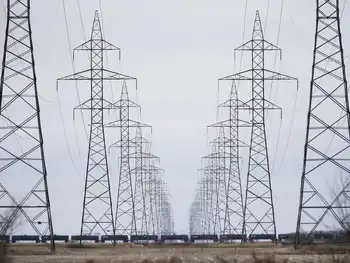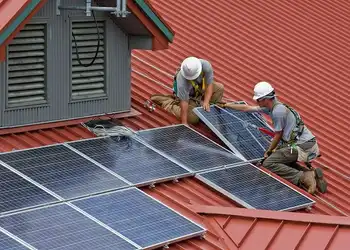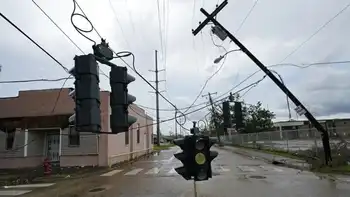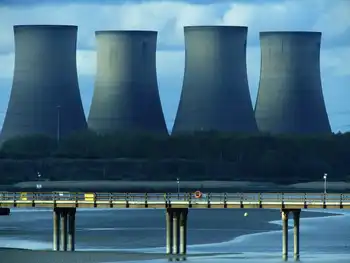Ithaca wants to be nationÂ’s first podcar city
By Associated Press
CSA Z463 Electrical Maintenance -
Our customized live online or in‑person group training can be delivered to your staff at your location.

- Live Online
- 6 hours Instructor-led
- Group Training Available
To Jacob Roberts, podcars — or PRTs, for personal rapid transit — represent an important component in the here-and-now of transportation.
"It's time we design cities for the human, not for the automobile," said Roberts, president of Connect Ithaca, a group of planning and building professionals, activists and students committed to making this upstate New York college town the first podcar community in the United States.
"In the podcar... it creates the perfect blend between the privacy and autonomy of the automobile with the public transportation aspect and, of course, it uses clean energy," Roberts said.
With the oil crisis reaching a zenith and federal lawmakers ready to begin fashioning a new national transportation bill for 2010, Roberts and his colleagues think the future is now for podcars — electric, automated, lightweight vehicles that ride on their own network separate from other traffic.
Unlike mass transit, podcars carry two to 10 passengers, giving travelers the freedom and privacy of their own car while reducing the use of fossil fuels, reducing traffic congestion and freeing up space now monopolized by parking.
At stations located every block or every half-mile, depending on the need, a rider enters a destination on a computerized pad, and a car would take the person nonstop to the location. Stations would have slanted pull-in bays so that some cars could stop for passengers, while others could continue unimpeded on the main course.
"It works almost like an elevator, but horizontally," said Roberts, adding podcar travel would be safer than automobile travel.
The podcar is not entirely new. A limited version with larger cars carrying up to 15 passengers was built in 1975 in Morgantown, W.Va., and still transports West Virginia University students.
Next year, Heathrow Airport outside London will unveil a pilot podcar system to ferry air travelers on the ground. Companies in Sweden, Poland and Korea are already operating full-scale test tracks to demonstrate the feasibility. Designers are planning a podcar network for Masdar City, outside Abu Dhabi, which is being built as the world's first zero-carbon, zero-waste city.
Meanwhile, more than a dozen cities in Sweden are planning podcar systems as part of the country's commitment to be fossil-fuel-free by 2020, said Hans Lindqvist, a councilman from Varmdo, Sweden, and chairman of Kompass, an association of groups and municipalities behind the Swedish initiative.
"Today's transportation system is reaching a dead end," said Lindqvist, a former member of the European parliament.
Cars have dominated the cityscape for nearly a century, taking up valuable space while polluting the air, said Magnus Hunhammar, chief executive officer of the Stockholm-based Institute for Sustainable Transportation, the world's leading center on podcar technology.
"Something has to change," he said. "We aren't talking about replacing the automobile entirely. We are adding something else into the transportation strategy."
Skeptics, however, question whether podcars can ever be more than a novelty mode of transportation, suitable only for limited-area operations, such as airports, colleges and corporate campuses. Detractors, mainly light-rail advocates, say a podcar system would be too complex and expensive.
"It is operationally and economically unfeasible," said Vukan Vuchic, a professor of transportation and engineering at the University of Pennsylvania who has written several books on urban transportation.
"In the city, if you have that much demand, you could build these guideways and afford the millions it would take, but you wouldn't have capacity. In the suburbs, you would have capacity, but the demand would be so thin you couldn't possibly pay for those guideways, elevated stations, control systems and everything else," Vuchic said.
Podcars typically run on an elevated guideway or rails, but they also can run at street level. As a starting point, pilot podcar networks can be built along existing infrastructure, supporters say.
Ithaca Mayor Carol Peterson said a podcar network could be part of her upstate city's long-range transportation plans and its mission of developing urban neighborhoods that are environmentally sustainable and pedestrian-friendly. Ithaca has a long history of progressive achievements — this summer, it began the first community-wide car sharing program in upstate New York.
In Ithaca, a network could connect the downtown business district and main business boulevard with the campuses of Cornell University and Ithaca College, which sit on hillsides flanking the city. When the two colleges are in session, Ithaca's population balloons from about 30,000 to about 80,000, causing big-city congestion on the city's roads.
Santa Cruz, Calif., recently hired a contractor to design a small solar-powered podcar system that would loop through the city's downtown and along its beach front.
The Institute for Sustainable Transportation predicts a podcar system will be installed in an American city within the next five years, although it is likely to cost tens of millions of dollars. Because of the huge initial investment, funding would have to come from both public and private sectors, IST officials said.
The capital cost is about $25 million to $40 million per mile, which includes guideways, vehicles and stations, compared with $100 million to $300 million a mile for light-rail or subway systems, according to the IST.
Although the plan for Ithaca is only in the conceptual stages, Roberts sees the city as a logical place for the country's first community-wide podcar network, noting that construction of the Erie Canal across upstate New York in the early 1800s revolutionized commercial transportation in a young America.
"Buffalo, Rochester, Syracuse, Albany are connected along a single line, the Erie Canal. Now, they are connected by the (New York State) Thruway. It would be easy to adapt. You could have a high-speed rail line, or even buses, deliver travelers to the podcar stations, and the podcars take them wherever they want to go in the city," he said.
But podcar developers say they have overcome most technological obstacles and now must overcome the political and cultural barriers that lie ahead, equating it to the mind-set revolution that occurred when Americans hitched up their horses for good to become a nation of motorists.
"We are introducing an alternative to the automobile for the first time in 100 years," said Christopher Perkins, chief executive officer of Unimodal Transport Solutions, a California company that builds podcars that operate on magnetic levitation instead of wheels.
"But if you look back 100 years, you saw that we made the transition from the horse to the car. I think we are ready to make another transition," he said.











